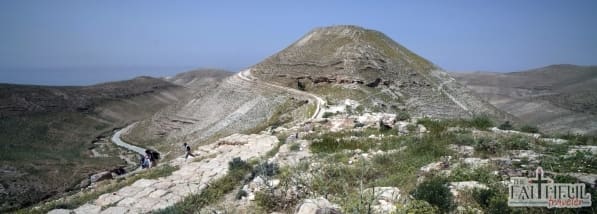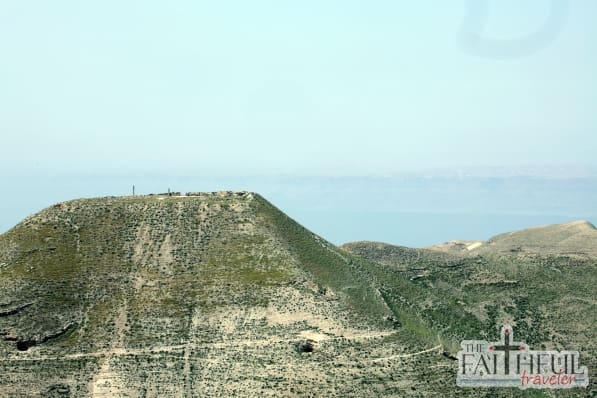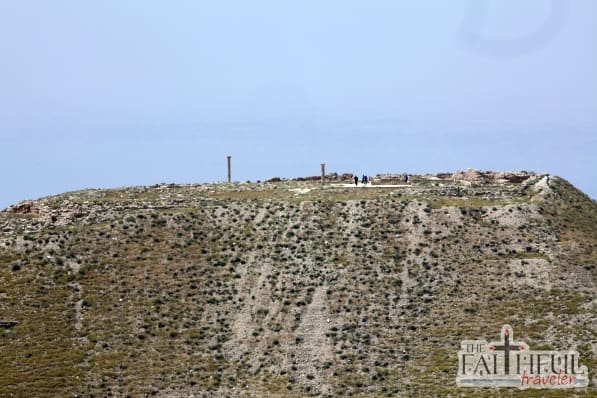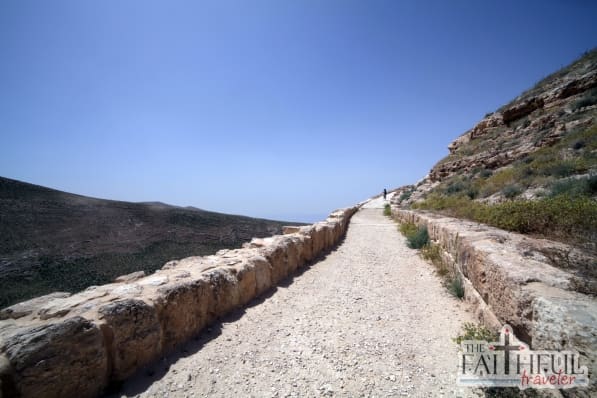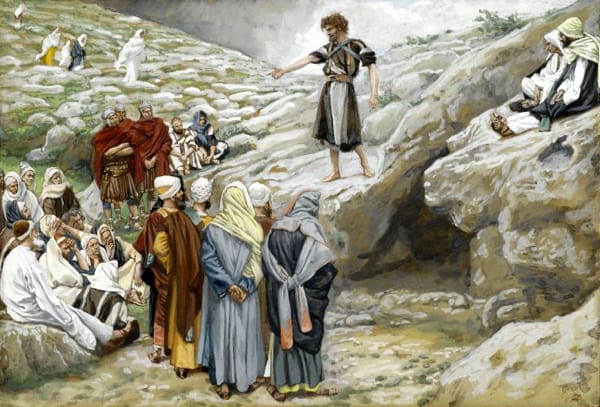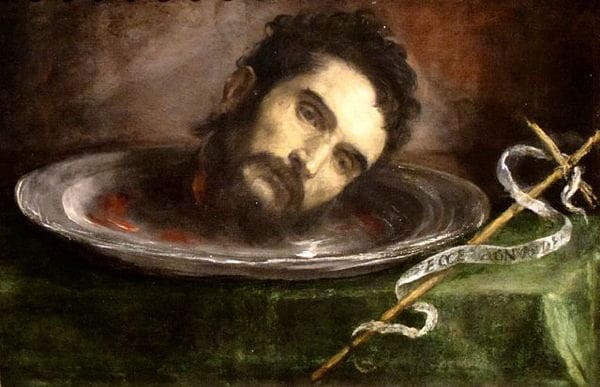Recently, on a trip to Jordan, I had the opportunity to visit Mukawir, the ruins of what was once called Machaerus, the mighty fortress where Herod Antipas imprisoned John the Baptist for about 2 years, then had him beheaded.

There isn’t much to see at Mukawir but some ruins amidst the rocks and scattered bushes. Still, I highly recommend this part of the world on any trip to the Holy Land. Jordan is so full of sacred sites, and its people are amazing. I can’t recommend it enough.
Here among the ruins, it’s hard to imagine Herod’s palace, described by Flavius Josephus as being “breathtaking in size and beauty.” But it was here. Once. Looking out toward that beautiful sea.
John the Baptist spent a lot of time in Jordan during his life. The area where he baptized Jesus in here in Jordan, too.
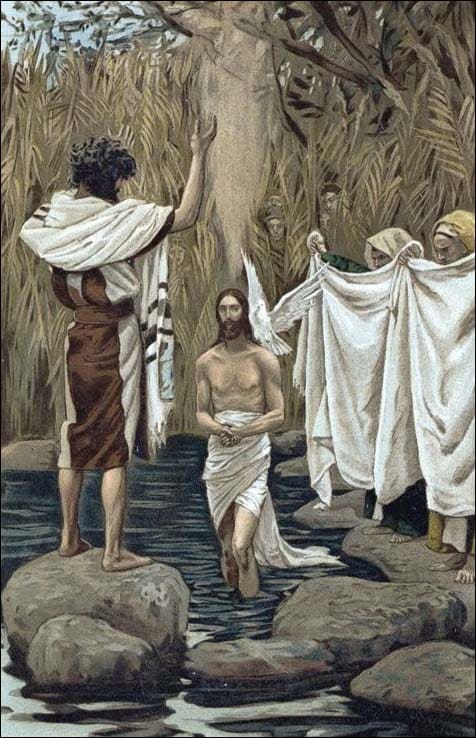 Today, it is called Bethany Beyond the Jordan, and was recently named a UNESCO World Heritage Site.
Today, it is called Bethany Beyond the Jordan, and was recently named a UNESCO World Heritage Site.
Like Mukawir, Bethany Beyond the Jordan is in the midst of wilderness, making it both beautiful in its naturalness and haunting in its sparseness.
To get to the plateau of the hill, you need to go down a series of steps, then climb up a long and winding road to the top.
I recommend you take the walk alone, even if you are with a group. Take the time to just walk and think. Think about the man who was killed here, brutally beheaded. Think about the girl who asked for his head, the mother who demanded that she do so, and the man who gave it to her.
How far away are they from our lives today?
When I was a little girl, hearing stories of the beheading of St John the Baptist seemed so unrealistic, from a barbarian world so separated from the one in which I lived. No one beheads anyone anymore, I’d console myself.
The world has changed so much since then.
As I made my way up this long road, I thought of the murder, of the martyrdom of John the Baptist, and how it is more alive today and more timely than ever.
It starts with lust. With physical desire. A young girl, manipulated by her mother, danced a dance that drove a lascivious old man to make a foolish promise, one he immediately regretted, but had to honor because… what? Of his honor?
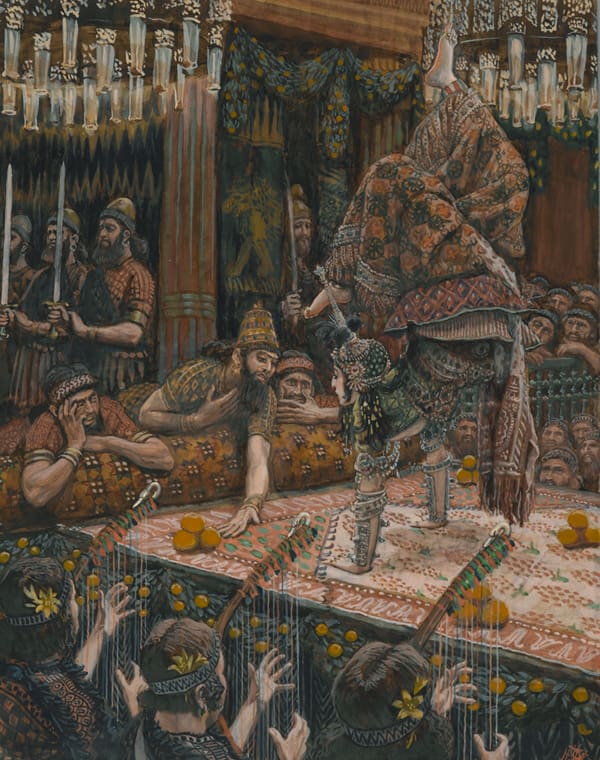 What honor did this man have? This man who divorced his Nabatean wife to marry the wife of his brother? Who then went on to lust after his… niece/step-daughter? That man had no honor.
What honor did this man have? This man who divorced his Nabatean wife to marry the wife of his brother? Who then went on to lust after his… niece/step-daughter? That man had no honor.
And so he gave the girl what she demanded, what her mother demanded: the head of the man who spoke the truth when no one else around them was brave enough to do the same.
Recently, I came across a particularly gruesome painting of an artist’s rendering of St John the Baptist’s severed head. It drew me in–so gory and yet so beautiful. Beautiful in what it symbolized–the ultimate sacrifice. Life for truth. The cross. I could not look away. But when I posted the image on social media, some of my friends begged me to remove it–it was too gory, to ugly to behold. (The image is at the end of this post, in case you want to see it.)
Today, in this over-sexualized world, where young girls (and boys) are manipulated and victimized daily–just like Salome–and lusted after by lascivious and sinful men (and women), the end result is a different kind of beheading. A beheading that is more delicate and easier, which can be done with scissors and a scalpel instead of a sword or a scythe.
One that–yet again–people do not want to see, and others are too afraid to speak of.
These ruins, as lonesome and empty as they seem, give me hope.
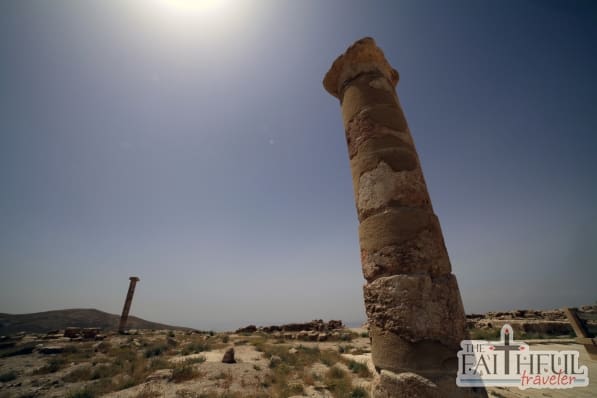 Once, among these columns, a mighty, merciless, and amoral man ruled a part of the world. Once, that same man killed the last prophet with a word, and sent the Son of God away to His crucifixion after mocking him.
Once, among these columns, a mighty, merciless, and amoral man ruled a part of the world. Once, that same man killed the last prophet with a word, and sent the Son of God away to His crucifixion after mocking him.
Once, that man was on the top of the world, and this was his view.
Once, Herod Antipas had power.
The world has changed a lot since then.
Today, on the feast of the brutal beheading of Jesus’ cousin, the voice of one crying in the desert, let these images give you hope.
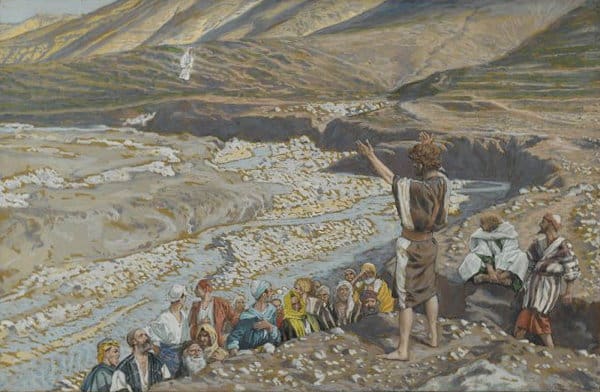 The road might seem rocky and dusty. The end might be brutal and painful.
The road might seem rocky and dusty. The end might be brutal and painful.
But God has won. His is the triumph.
Everything else is dust.
St John the Baptist, pray for us.
All photography courtesy and copyright of Diana von Glahn and The Faithful Traveler, LLC, all rights reserved, used with permission.
Art: The Baptism of Jesus (Baptême de Jésus), The Daughter of Herodias Dancing (Hérodiade dansant), Saint John the Baptist and the Pharisees (Saint Jean-Baptiste et les pharisiens), Saint John the Baptist Sees Jesus from Afar (Saint Jean-Baptiste voit Jésus de loin) all by James Tissot, via Wikimedia Commons. ‘Head of Saint John the Baptist’ by an anonymous Spanish painter, c. 1600-1650, via Wikimedia Commons.
********* scroll down for the painting of St John the Baptist’s head*********



